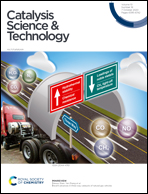Homogeneous catalytic transfer semihydrogenation of alkynes – an overview of hydrogen sources, catalysts and reaction mechanisms†
Abstract
Chemoselective semihydrogenation of alkynes to alkenes with E- or Z-stereoselectivity is among the most important transformations in the synthesis of highly functional organic building blocks. Use of hydrogen transfer reagents instead of gaseous hydrogen represents a viable, safe alternative in many cases. This review summarises recent developments in the field using homogeneous, molecularly defined catalyst systems with focus on hydrogen sources and mechanistic aspects of the respective systems.



 Please wait while we load your content...
Please wait while we load your content...